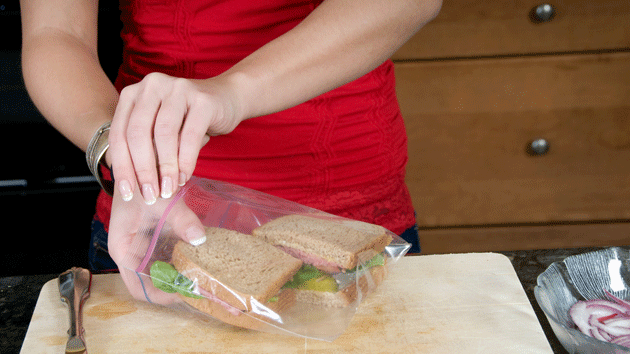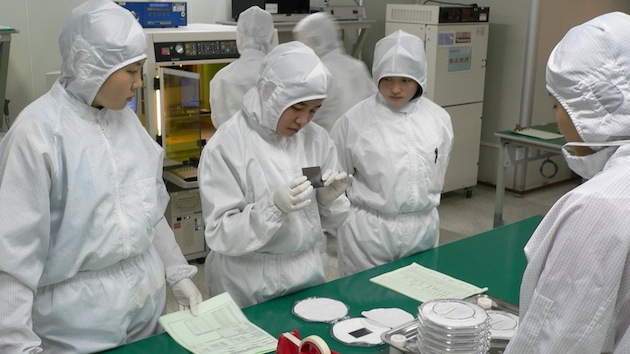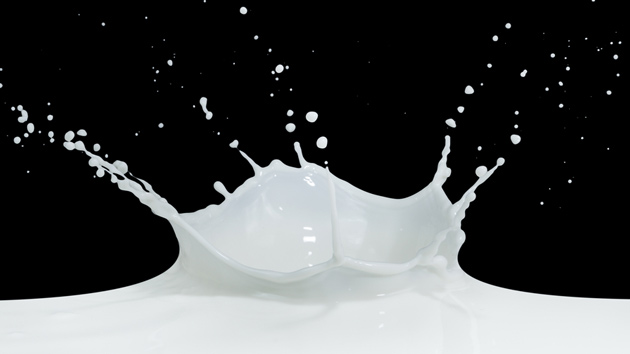
<a href="http://www.shutterstock.com/pic-94544296/stock-photo-woman-packing-sandwiches.html?src=x9xP4swo3tYbfSA-04NDiA-1-7" target="_blank">Whytock</a>/Shutterstock
A while back, I wrote about the US regulatory system’s strange attitude toward nanotechnology and food.
On the one hand, the Food and Drug Administration is on record stating that nanoparticles—which are microscopically tiny pieces of common materials like silver and clay—pose unique safety concerns. The particles, which measure in at a tiny fraction of the width of a human hair, “can have significantly altered bioavailability and may, therefore, raise new safety issues that have not been seen in their traditionally manufactured counterparts,” the FDA wrote in a 2012 draft proposal for regulating nanoparticles in food. On the other hand, its solution—that the food industry conduct safety testing that is “as rigorous as possible” and geared specifically to nano-materials before releasing nano-containing products onto the market—will be voluntary.
But what about packaging—the wrappers and bags and whatnot that hold food to keep it fresh? Nano-sized silver has powerful antimicrobial properties and can be embedded in plastic to keep food fresh longer; and nanoparticles of clay can help bottles and other packaging block out air and moisture from penetrating, preventing spoilage. Yet research has suggested (see here and here) that nanoparticles can migrate from packaging to food, potentially exposing consumers.
So how widely is nanotech used in the containers that contact our food? Back in 2010, the Environmental Protection Agency released a “State of the Science Literature Review” on nanosilver (PDF; warning: 221 pages). The report confirms that nano-materials, including silver, are being used in food packaging, but shows why it’s hard to get a grip on how just widely. “Current labeling regulations do not require that the nanomaterial be listed as an ingredient,” neither in food or in food packaging, the EPA report states. And “manufacture of nanosilver-containing products is shifting to the Far East, especially China, South Korea, Taiwan and Vietnam,” making it even harder to track nano-containing products that come in from abroad.
The Project on Emerging Nanotechnologies (PEN)—a joint venture of Virginia Tech and the Wilson Center—keeps a running inventory of “nanotechnology-based consumer products introduced on the market.” A PEN spokesperson stressed to me that its list isn’t comprehensive—it by no means captures every nano-associated item, and some products on the list may no longer contain nanotech. That said, the database includes 20 products in the “food and beverage storage” category, including a couple of beer bottles, aluminum foil, sandwich bags, and even a salad bowl.
Meanwhile, environmental watchdog groups warn that nanotech-imbued packaging will soon become ubiquitous. “Major food companies are investing billions in nanofood and nanopackaging,” Friends of the Earth stated in a 2014 report. Tom Neltner, a food additives researcher with the Natural Resources Defense Council, told me in an email that, “we believe nano-engineered particles are being extensively used in food packaging.”
When I asked Neltner for specifics, he sent me to Joseph Hotchkiss, director of the School of Packaging and Center for Packaging Innovation and Sustainability at Michigan State University, and a close watcher of the food-packaging industry. Hotchkiss told me that while nano-materials are quite attractive to the food industry as a way to cheaply prolong the shelf life of packaged foods, they currently “aren’t widely used” because “no one knows for sure what kinds of risks from ingesting exquisitely tiny amounts of nano-materials may or not represent.” As a result, the food industry is “waiting on the sidelines” until more safety research emerges.
Indeed, the above-noted EPA report reveals significant health concerns around nanoparticles. They “can pass through biological membranes,” the report states, including the blood-brain barrier. And they’re “small enough to penetrate even very small capillaries throughout the body.”
What harm nanoparticles cause when they move about our bodies remains murky, though. “There are very limited well controlled human studies on the potential toxicities of nanosilver,” the EPA states; but animal studies have shown potential toxicity for the liver, kidneys, and the immune system.
Back in March, the EPA moved to block a company called Pathway Investment from marketing plastic food storage containers laced with nano-silver to the public. But what ran the company afoul with the EPA wasn’t its use of nano-silver per se; rather, it was the claim that its product would kill microbiota in stored food. “Claims that mold, fungus or bacteria are controlled or destroyed by a particular product must be backed up with testing so that consumers know that the products do what the labels say,” the EPA’s press release states.
Meanwhile, no one seems to know for sure how widely nanotech is being used in packaging, or what the health consequences are. And that’s potentially a big problem stemming from some very small stuff.













